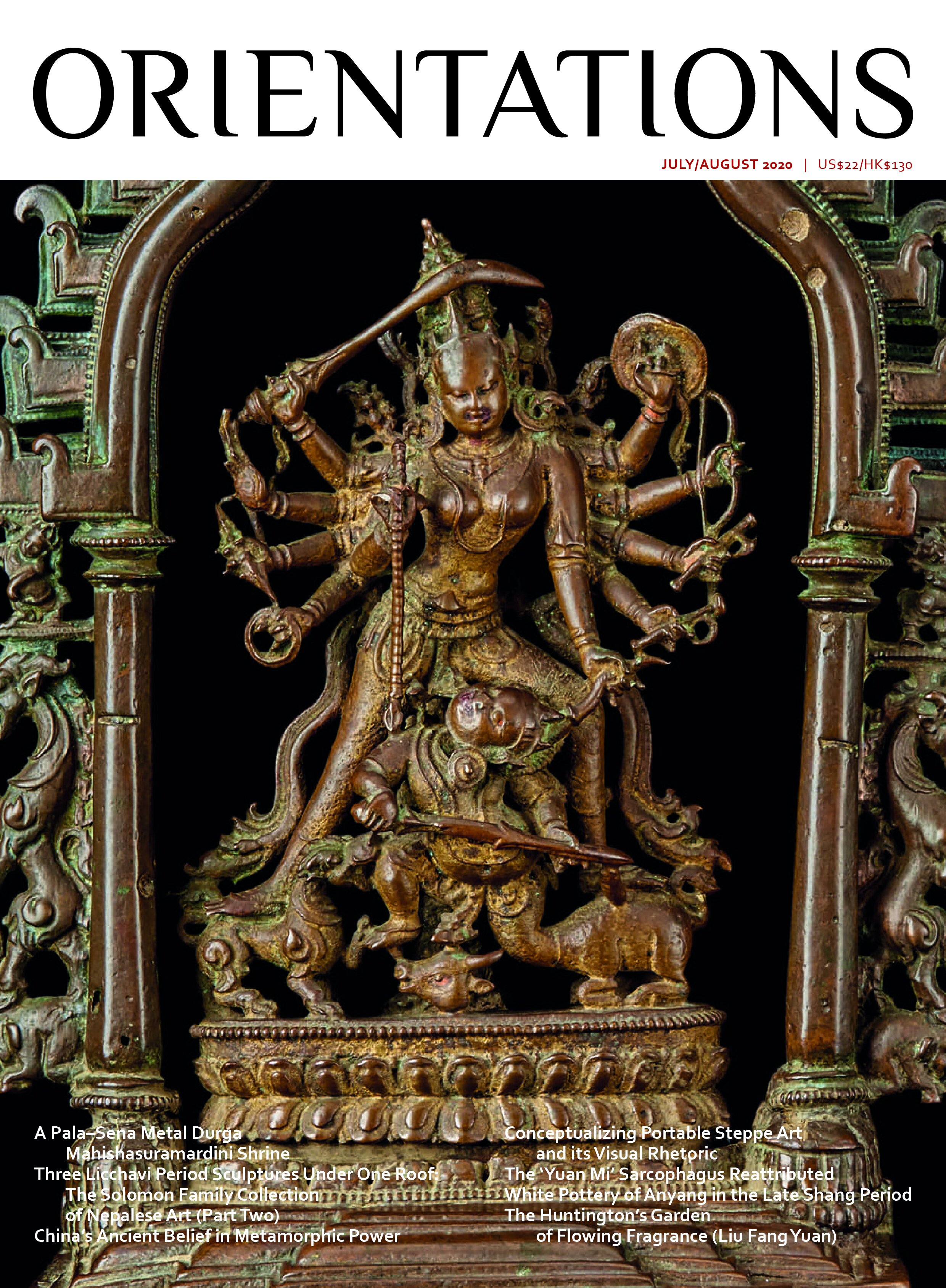JUL/AUG 2020
VOLUME 51 - NUMBER 4
We are most fortunate to be in Hong Kong, a city which has managed to contain the spread of Covid-19, with a relatively small number of infections and even fewer deaths. Although as we go to press social distancing measures are still in place and borders are closed to non-residents, life is seemingly back to business as usual. The streets are teeming with people and restaurants are full. People are eager to get back to their lives in the ‘new normal’.
Sotheby’s spring series of sales in Hong Kong, delayed from April, will now take place from 5 to 11 July, with live auctions at the Hong Kong Convention and Exhibition Centre (HKCEC). Christie’s spring sales, delayed from May, will be held from 4 to 13 July. Having lost their slot at the HKCEC, the previews will be at several locations around Hong Kong and the live auctions in their office in Alexandra House. Bonhams’ sales during July will, as usual, be in their Pacific Place office. After long deliberation, Fine Art Asia has decided to go ahead with its autumn fair, from 4 to 7 October. It may be wishful thinking that worldwide travel will be fully open by the end of the year, but hopefully ‘travel corridors’ will have been set up at least between countries within the region.
Orientations is known as the magazine for collectors and connoisseurs of art. As such, we are pleased to include two articles on important private collections, that of Dr David Nalin and The Solomon Family Collection of Nepalese Art. The first highlights a sculptural masterpiece of medieval eastern India, a metal shrine of the Hindu goddess Durga killing the buffalo demon, which we have chosen as our cover. In addition to being an avid collector, Dr Nalin is known for his contributions to medical science, having led the trials that first demonstrated the efficacy of Oral Rehydration Therapy in cholera patients and those with other illnesses, saving millions of lives. The second article discusses two Licchavi period sculptures, a four-faced Shiva lingam and a female figure with a parrot perched on her wrist, along with the popularity of the Shiva cult in the Kathmandu valley.
The ‘Yuan Mi’ stone sarcophagus is one of a group of late Northern Wei (386–534) mortuary stones excavated in Luoyang in China’s Henan province in the early 20th century. Dating from the 520s, it was acquired by the Minneapolis Institute of Art in 1946 and has long been considered to have been made for the tomb of Yuan Mi, a Northern Wei prince. Recent archaeological discoveries suggest that the owner of the sarcophagus was in fact another Northern Wei prince named Yuan Rong (481–526), a member of the imperial family and a general who died on then battlefield. Going back further in Chinese history, the decision to cast most bronzes into pottery forms instead of tools or weapons is distinctive of the Shang dynasty (c. 1600–1046 BCE) and its succeeding bronze cultures. We examine a group of white pottery from a few elite tombs in Anyang in order to gain a deeper understanding of the social and symbolic transition from pottery to bronze in the Shang dynasty.
We also explore in this issue power symbols and their significance to early ritual and belief in China during the Longshan era, and the conceptualization of composite imagery on Ordos-style portable art from the collection of the University of Pennsylvania Museum of Archaeology and Anthropology.
Lastly, we include an article from our ‘Gardens’ series discussing Liu Fang Yuan, the Garden of Flowing Fragrance, at the Huntington. Recently expanded, Liu Fang Yuan creates an immersive experience in California of 17th century Suzhou garden culture where visitors may enjoy a less hectic pace of life.
FEATURES
David Nalin. Analysis of a Pala–Sena Metal Durga Mahishasuramardini Shrine
Gautama V. Vajracharya. Three Licchavi Period Sculptures Under One Roof: The Solomon Family Collection of Nepalese Art (Part Two)
Elizabeth Childs-Johnson. Who is that Human at Shimao? China’s Ancient Belief in Metamorphic Power
Petya Andreeva. ‘Animal Style’ at the Penn Museum: Conceptualizing Portable Steppe Art and its Visual Rhetoric
Jin Xu. Recovering the Honour of a Royal General: The ‘Yuan Mi’ Sarcophagus Reattributed
Alice Cheng. White Pottery of Anyang in the Late Shang Period
Phillip E. Bloom. Transplanting Suzhou: The Huntington’s Garden of Flowing Fragrance (Liu Fang Yuan)
REVIEWS
Kevin McLoughlin. Jingdezhen to the World: The Lurie Collection of Chinese Export Porcelain from the Late Ming Dynasty by Teresa Canepa
CURATOR’S CHOICE
Michaela Pejcochova. The One-Eyed Pilgrim’: A Forgotten Chinese Painter from Tianjin

